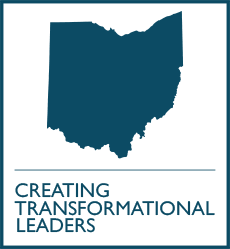Tips & Guidelines
Guidelines for Scholarship Day Oral Presentations
Note: Please allow 10 minutes for your presentation and 2 minutes for a question and answer session.
- Consider using a commonly used presentation software (e.g., PowerPoint, Keynote, or Prezi) to avoid conflicts with the Windows-based system of the lecture hall.
- The first presentation slide should include the title of the talk with authors and institution listed.
- Research studies will be evaluated on the basis of the following criteria:
- Introduction – Background and Significance
- literature review pertaining to the research question
- relevance to family medicine
- clearly stated hypotheses in a declarative form
- innovativeness of the research
- Methods
- description of the methods to include supporting evidence for the validity of the assessment/measurement scheme.
- appropriateness of the methods used to address the hypotheses
- Results
- description of the analyses
- description of the results
- are the results publishable or can they be disseminated in some way?
- Conslusion
- how the results inform the pertinent research literatures and the practice of family medicine
- limitations of the study
- Presentation
- clarity of the presentation
- quality of audiovisual materials
- presenter displayed enthusiasm/passion for the project
- Introduction – Background and Significance
- Case studies will be evaluated on the basis of the following criteria:
- Introduction – Background and Significance
- literature review pertaining to the case
- background of the case, including the disorder
- gap analysis
- relevance to family medicine
- Case
- relevant medical history of the patient (to include relevant positive and negative findings)
- description of the patient’s symptoms and signs
- description of any tests that were carried out
- description of any treatment or intervention
- description of the results of the treatment or intervention
- is the case publishable or can be disseminated in some way?
- Conclusion
- how the case informs the pertinent research literatures and the practice of family medicine
- how the case informs understanding of the disease etiology or treatment mechanism
- Presentation
- clarity of the presentation
- quality of audiovisual materials
- presenter displayed enthusiasm/passion for the project
- Introduction – Background and Significance
- Other projects (e.g., curricular innovations, quality improvement, evidence-based reviews, etc.) will be evaluated on the basis of the following criteria:
- Introduction– Background and Significance
- literature review pertaining to the topic
- relevance to family medicine
- clearly stated problem statement or need for project
- innovativeness of the project
- Methods
- description of the methods
- appropriateness of the methods used to address the problem statement
- Outcomes
- description of the project outcomes
- are the results publishable and/or can the project be widely disseminated?
- project has wide-reaching impact – impacts many patients or practitioners
- Conclusion
- how the project can inform the practice of family medicine
- limitations of the project
- Presentation
- clarity of the presentation
- quality of audiovisual materials
- presenter displayed enthusiasm/passion for the project
- Introduction– Background and Significance
- All criteria will be scored on a scale from 1 = “poor” to 5 = “excellent”.
- Improving the readability of presentation slides
- Minimize the content on each slide to the essential points (about three or four bullets). The text on the slides does not have to explain everything about the project. Explain the most important information in a way to underscore or amplify your talk.
- Minimize the number of slides to about no more than one per minute.
- Avoid small font
- Graphs, tables, and drawings often work well for the results of the project, but the slide with this kind of material should also contain the big message or headline of the results being depicted. Any graphic should be clearly legible and readily interpretable with a minimum of explanation.
- Take care to use contrasting colors for all figures, pastels and variations of grey often do not project well.
- Avoid slide formats with busy background designs, animations, and graphics that take the focus off the content.
- See “Tips for Designing PowerPoint Presentations” for more hints.
- Improving the oral aspect of the presentation
- Rehearse the presentation in the presence of others and solicit frank constructive feedback.
- Speak clearly and slowly. If you find yourself running out of time, then delete material and avoid the temptation to speak faster.
- Frame the presentation as a story with a beginning, middle, and end that is clearly tied to a theme. The end should remind the listener of the beginning and demonstrate a resolution to the tension that lent importance to the story.
- Be mindful of transitions between slides and between major sections of the talk. Forecasting the next slide/section and reflecting on the content of the previous slide/section can help bind them together in the listener’s mind.
- Address the audience; be mindful of their interest in the content and their capacity to absorb it.
- Know the contents of every slide to include the results presented in every Table and Figure.
- Anticipate questions that might come from the audience and prepare responses.
- Consider visiting the space where the presentation will be delivered to get a sense of its proportions. Space proportions will influence the need to moderate non-verbal communication (e.g., the difference between stage acting (big space) and motion picture acting (small space of the lens)).
- At the end of the talk ask audience members if they have questions and afterwards thank them for their attention.
- See “Tips for Developing and Giving a Medical Presentation” for more hints.
Contact
Joanne Fabick
Administrative Coordinator
Phone: 330.325.6770
Email: jef@neomed.edu
Department Chair
John Boltri, M.D.
Phone: 330.325.6787
Email: jboltri@neomed.edu


